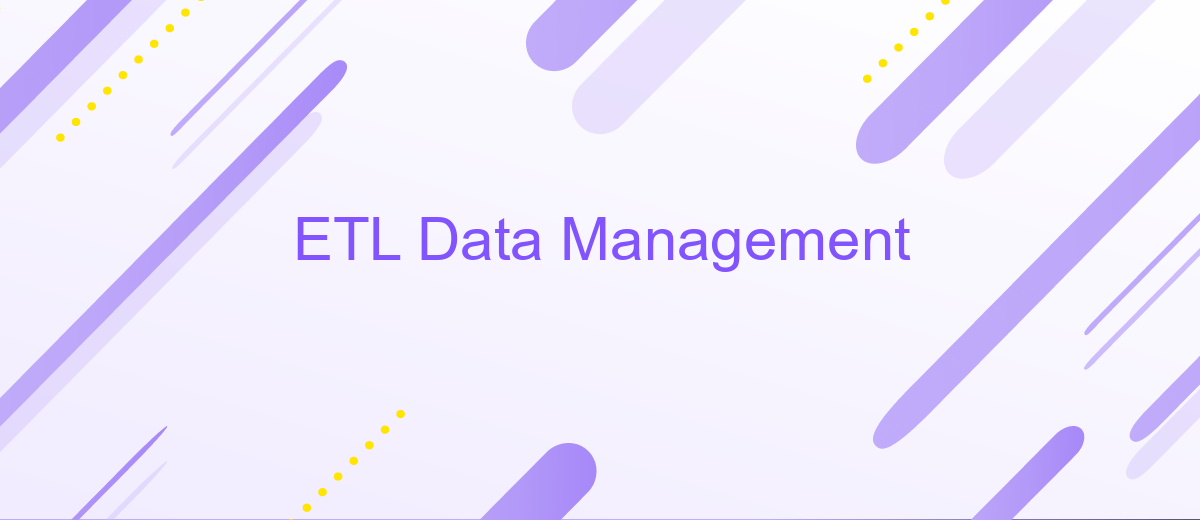ETL Data Management
ETL (Extract, Transform, Load) data management is a critical process in the realm of data analytics and business intelligence. It involves extracting data from various sources, transforming it into a suitable format, and loading it into a data warehouse. This ensures that organizations can efficiently analyze and utilize their data to drive informed decision-making and gain competitive advantages.
Introduction to ETL Data Management
ETL (Extract, Transform, Load) Data Management is a crucial process in the field of data analytics and business intelligence. It involves extracting data from various sources, transforming it into a suitable format, and loading it into a data warehouse or other storage systems. This process ensures that data is consistent, reliable, and ready for analysis.
- Extract: Gathering data from multiple sources such as databases, APIs, and flat files.
- Transform: Converting data into a usable format by cleaning, aggregating, and enriching it.
- Load: Storing the transformed data into a data warehouse or other target systems.
Effective ETL Data Management can be facilitated by various integration services like ApiX-Drive, which automates the process of connecting different data sources and applications. By leveraging such tools, organizations can streamline their data workflows, reduce manual intervention, and ensure timely and accurate data availability for decision-making purposes.
ETL Process: Extraction, Transformation, and Loading

The ETL process consists of three main stages: Extraction, Transformation, and Loading. During the Extraction phase, data is collected from various sources such as databases, APIs, and flat files. This step is crucial as it ensures that the data gathered is accurate and relevant for further processing. Tools like ApiX-Drive can facilitate seamless data extraction by integrating with multiple data sources and automating the data collection process.
In the Transformation phase, the extracted data is cleaned, formatted, and transformed to meet the requirements of the target system. This may involve filtering out irrelevant data, converting data types, and applying business rules. Effective transformation ensures data consistency and quality. Finally, in the Loading phase, the transformed data is loaded into the target database or data warehouse. This step must be carefully managed to avoid data loss and ensure that the data is available for analysis and reporting. ApiX-Drive can also assist in this phase by automating data loading processes, ensuring that data is updated in real-time.
Benefits and Challenges of ETL

ETL (Extract, Transform, Load) processes are essential for managing data in modern enterprises. They enable the consolidation of data from various sources into a centralized repository, facilitating better decision-making and more efficient operations.
- Data Integration: ETL tools allow seamless integration of data from disparate sources, ensuring consistency and accuracy.
- Improved Data Quality: By transforming data, ETL processes help in cleansing and standardizing data, leading to higher data quality.
- Enhanced Decision-Making: Centralized and well-structured data enables more insightful and timely business decisions.
- Scalability: ETL processes can handle growing data volumes, making them suitable for businesses of all sizes.
Despite its benefits, ETL also presents challenges such as complexity in setup and maintenance, and the need for specialized skills. Integrating various data sources can be particularly challenging. Services like ApiX-Drive can simplify this by automating data integration, reducing the manual effort required and ensuring smoother ETL operations. By leveraging such tools, businesses can overcome the hurdles associated with ETL and fully realize its potential.
Best Practices and Tools for ETL Implementation

Implementing ETL processes effectively requires adherence to best practices and the use of robust tools. Firstly, it's crucial to ensure data quality at every step. Validating and cleansing data before loading it into the target system can prevent downstream issues. Additionally, consider scalability from the outset to accommodate growing data volumes and complexity.
Another key practice is to automate as much of the ETL process as possible. Automation reduces the risk of human error and enhances efficiency. Monitoring and logging are also essential for tracking ETL performance and troubleshooting issues promptly.
- Ensure data quality through validation and cleansing.
- Plan for scalability to handle increasing data volumes.
- Automate ETL processes to minimize human error.
- Implement monitoring and logging for performance tracking.
Using the right tools can significantly streamline ETL implementation. ApiX-Drive, for example, offers seamless integration capabilities, making it easier to connect various data sources and automate data workflows. Leveraging such tools can save time and resources, allowing teams to focus on more strategic tasks.
Future of ETL Data Management
The future of ETL data management is poised for significant transformation, driven by advancements in automation, real-time processing, and cloud-based solutions. Automation tools are increasingly enabling businesses to streamline their ETL processes, reducing manual intervention and minimizing errors. Real-time data processing capabilities are becoming more accessible, allowing organizations to make quicker, data-driven decisions. Cloud-based ETL solutions are also gaining traction, offering scalability and flexibility that on-premises systems lack.
Integration services like ApiX-Drive are playing a crucial role in this evolving landscape. By simplifying the setup of data integrations, these services enable businesses to connect various data sources effortlessly. ApiX-Drive, for example, allows for seamless integration between numerous applications, ensuring that data flows smoothly and efficiently across platforms. As ETL tools continue to evolve, the focus will likely shift towards more intelligent, self-service solutions that empower users to manage data without extensive technical expertise.
FAQ
What is ETL in data management?
Why is ETL important?
How often should ETL processes run?
Can ETL processes be automated?
What are common challenges in ETL data management?
Time is the most valuable resource in today's business realities. By eliminating the routine from work processes, you will get more opportunities to implement the most daring plans and ideas. Choose – you can continue to waste time, money and nerves on inefficient solutions, or you can use ApiX-Drive, automating work processes and achieving results with minimal investment of money, effort and human resources.

